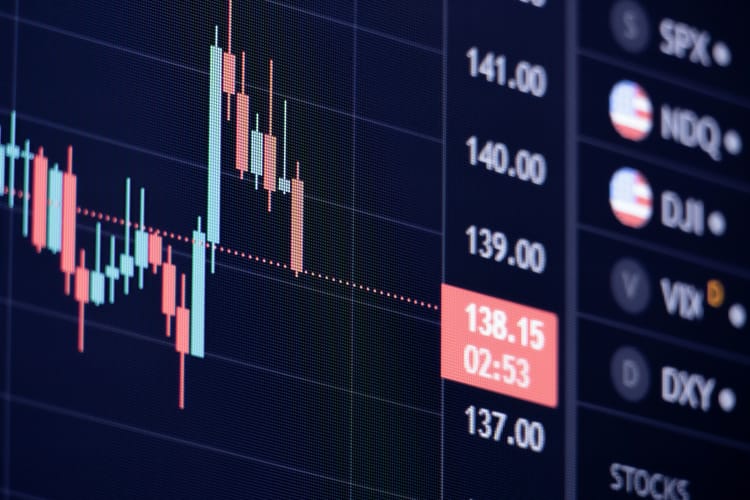Practical tips on how high probability trading signals can help with trade alerts?

High-probability trading signals and trade alerts work synergistically to improve your trading efficiency and increase your chances of success in the market.
How?
Let's have a look at some scenarios to prove the point!
But first, Let's recap some basic knowledge
What are Trading Signals?
Trading signals are indicators or patterns that suggest potential opportunities for buying or selling a specific asset (e.g., stock, currency, option). These signals are derived from various sources, Like Technical Analysis, Fundamental Analysis, Sentiment Analysis, etc. Their reliability can vary depending on the specific signal and the associated strategy, but If used strategically, High Probability Trading Signals can improve your Trading Results drastically.
What are Trade Alerts?
Trade alerts are automated notifications triggered by specific events or conditions set by the user. They aim to inform and prompt traders about potential trading opportunities or events related to their chosen assets and trading strategy.
How do Trade Alerts and Trading Signals Work Together?
Trading signals and alerts work together to enhance your decision-making process in several ways:
1. Focusing your attention: By highlighting potential entry and exit points based on specific criteria, signals help you filter through vast market data and direct your attention towards relevant opportunities that align with your strategy. This saves you time and effort in analyzing every single price movement.
2. Providing a framework: Trade alerts are reminders or triggers based on the identified signal. This can be particularly beneficial in fast-moving markets where an opportunity might disappear quickly. The alert prompts us to revisit the signal and analyze the situation before deciding.
3. Encouraging deeper analysis: Instead of blindly following a signal, the alert prompts you to conduct your own research and analysis. You can then evaluate the signal's validity by looking at:
- Underlying reasons: What factors are causing the signal to trigger?
- Market context: Is the signal aligned with the broader market sentiment and trends?
- Confirmation: Do other indicators, like fundamental analysis or price patterns, support the signal?
4. Promoting discipline: Trade alerts can help you maintain trading discipline by prompting you to take action at predefined points based on your pre-established strategy. This enables you to avoid emotional decision-making driven by fear or greed, leading to a more disciplined and well-rounded approach.
5. Personalization: You can customize your alerts to only notify you about signals that meet your specific risk tolerance and trading strategies. This ensures you receive genuinely relevant and actionable alerts for your individual trading goals.
Practical tips on how high probability trading signals can help with trade alerts?
Okay, so before diving straight into action, let's say a few words. The practical tips mentioned below are just some of the many, many approaches that you can employ during the trading of your assets. The purpose is to give you an elaborate idea of how trading Signals and Trade Alerts work closely, identifying the opportunities and then informing you, in time, of what action to take.
The Fun Part?
Some Advanced Trading Platforms, Like AfterPullback, can even go as far as booking the trade for you or even writing it in your trading Journal and then notifying you via your preferred method of communication. You can have more details about this whole process of identifying opportunities and generating the signals and alerts here.
In the scenarios below, we will see how Trade alerts and Trading Signals work together in
- Identifying Entry and Exit Points with Alerts
- Setting Stop-Loss and Take-Profit Alerts
- News and Sentiment Analysis Alerts
- Bollinger Bands Squeeze Alert
- Volume Spike Alert
- Relative Strength Index (RSI) Divergence Alert
- Support and Resistance Level Breakout Alert
So Let's Start,
Scenario 1: Identifying Entry and Exit Points with Alerts
Imagine you're interested in a swing trading strategy using the moving average crossover signal. You can set up an alert in your trading platform based on this signal. Here's how it works:
High Probability Trading Signal: The signal identifies when a shorter-term moving average (e.g., 50-day) crosses above a longer-term moving average (e.g., 200-day), potentially indicating an uptrend.
Trade Alert: You can configure an alert to trigger an email or notification when this crossover happens on a specific stock you're interested in.
This alert helps you identify a potential entry point for a long trade (buying the stock).
Similarly, you can set another alert based on the opposite crossover (short-term moving average falling below the long-term), which could indicate a downtrend and act as a potential exit point for your long trade or even a possible entry point for a short trade (selling the stock).
On a side note, If you want to know more about swing trading Signals, you can learn here: How Are Swing Trading Signals Compared With Day Trading and Long-term Investing Signals?
Scenario 2: Setting Stop-Loss and Take-Profit Alerts
High probability signals can also help with setting stop-loss and take-profit orders through alerts:
Stop-Loss Alert: Based on the chosen trading signal and risk tolerance, you can set an alert to automatically trigger a stop-loss order if the price moves against your trade, limiting potential losses.
Take-Profit Alert: You can also set an alert to automatically execute a take-profit order once the price reaches a specific target price, locking in your gains.
These alerts help automate risk management and potential profit-taking, ensuring your trade stays within your predefined parameters without constant monitoring.
Scenario 3: News and Sentiment Analysis Alerts
Signal: A trading platform identifies a significant news event or a shift in social media sentiment related to a specific Company. This could indicate a potential change in the stock price.
Trade Alert: The platform triggers an alert when this event or sentiment shift occurs, allowing you to research the news and consider potential entry or exit points based on its impact.
Example: Your platform might alert you if there's a sudden surge in positive mentions of a particular Company on Twitter, signaling a potential buying opportunity. However, it's crucial to research the news and understand the underlying reasons behind the positive sentiment before making any decisions.
Scenario 4: Bollinger Bands Squeeze Alert
Signal: The Bollinger Bands indicator, which measures volatility, contracts significantly, indicating a potential breakout in either direction (upward or downward).
Trade Alert: The platform generates an alert when the Bollinger Bands contract, notifying you of this potential breakout opportunity.
Example: A stock's Bollinger Bands suddenly tighten, suggesting a potential breakout either way. The alert prompts you to analyze other indicators and market context to determine the direction of the breakout and if it aligns with your trading strategy.
Scenario 5: Volume Spike Alert
Signal: A surge in trading volume occurs for a specific stock, which could indicate increased interest and potential volatility.
Trade Alert: The platform sends an alert notifying you about the volume spike, prompting you to investigate further.
Example: A stock experiences a sudden and significant increase in trading volume. This alert helps you be aware of the increased activity. It allows you to analyze other technical indicators and news to understand the reason behind the volume spike and potentially capitalize on a trend or avoid entering a volatile market.
Scenario 6: Relative Strength Index (RSI) Divergence Alert
Signal: The RSI, which measures momentum, diverges from the price action. This could indicate a trend reversal or a continuation of the current trend.
Trade Alert: The platform triggers an alert when a significant divergence between RSI and price occurs, allowing you to investigate further.
Example: The price of a stock continues to rise, but the RSI starts to decline. This divergence could signal a weakening uptrend and a potential selling opportunity. However, analyzing other indicators and market factors is crucial to confirm the potential trend reversal.
Scenario 7: Support and Resistance Level Breakout Alert
Signal: The price of a stock breaks through a previously established support or resistance level, potentially indicating a significant shift in the trend.
Trade Alert: The platform sends an alert when a breakout occurs, notifying you of the potential trend change.
Example: A stock price consistently bounces off a specific support level. The platform then sends an alert if the price breaks above this level, potentially signalling a trend reversal and a potential entry point for a long trade. However, confirming the breakout's validity is important by analyzing additional indicators like volume and candlestick patterns.
A Word of Caution!!
While trade signals can be helpful tools, it's essential to approach them with caution and a healthy dose of skepticism. Here are some key points to remember:
Signals are not guarantees
Trade signals are merely suggestions based on specific criteria or algorithms. They don't guarantee that a trade will be profitable. Market conditions can change rapidly, and unforeseen events can occur, rendering a signal inaccurate.
Past performance is not indicative of future results
Even if a signal has a good track record in the past, it doesn't mean it will continue to be successful in the future. Market dynamics constantly evolve, and past performance shouldn't be the basis for trading decisions.
Risk management is crucial.
Always prioritize proper risk management strategies whether you use trade signals or not. This includes using stop-loss orders to limit potential losses, diversifying your portfolio, and allocating only a reasonable portion of your capital to any trade.
Understand the signals and their limitations.
Don't blindly follow any trade signal without understanding the logic behind it and the limitations of the underlying strategy or algorithm. Conduct your research, analyze the market context, and use the signal as a starting point for informed decision-making.
Beware of emotional trading.
Trade signals can sometimes trigger emotional responses, such as fear or greed, leading to impulsive decisions. Always maintain discipline and stick to your trading plan, regardless of what the signals might suggest.
Beware of scams
Unfortunately, some unscrupulous individuals may try to sell fraudulent or unreliable trade signals. Be cautious of promises of guaranteed profits, and do your due diligence before subscribing to any paid signal service.
Use signals responsibly
Trade signals are tools, not replacements, for your judgment and analysis. Utilize them as a starting point for further research and incorporate them into your overall trading strategy, taking full responsibility for your decisions.
Remember, successful trading requires knowledge, experience, discipline, and a healthy dose of caution. While trade signals can be valuable tools, use them wisely and never rely solely on them to make trading decisions.
Conclusion
Trade alerts and high-probability trading signals offer valuable assistance in navigating financial markets. While not guaranteed success, utilizing them effectively can streamline your trading workflow, improve your focus, and enhance your risk management strategies. By combining the filtering power of alerts with the insightful guidance of high-probability signals, you can confidently approach your trading decisions and potentially increase your chances of success in the ever-evolving market landscape.
Remember, however, that these tools are separate from proper research, sound analysis, and responsible risk management practices. With a blend of knowledge, discipline, and the right tools, you can trade in the market with greater control and potentially pave your way toward a more rewarding trading experience.
Trade Smarter!!





